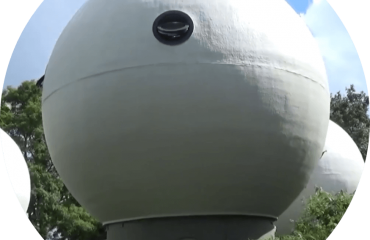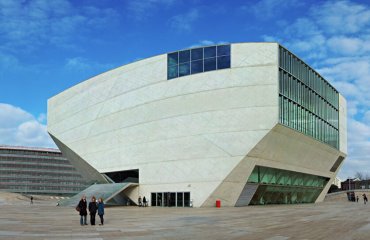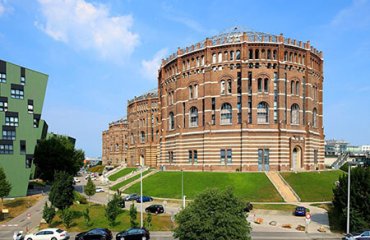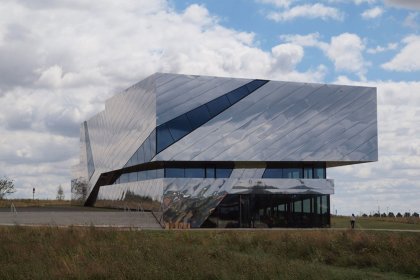
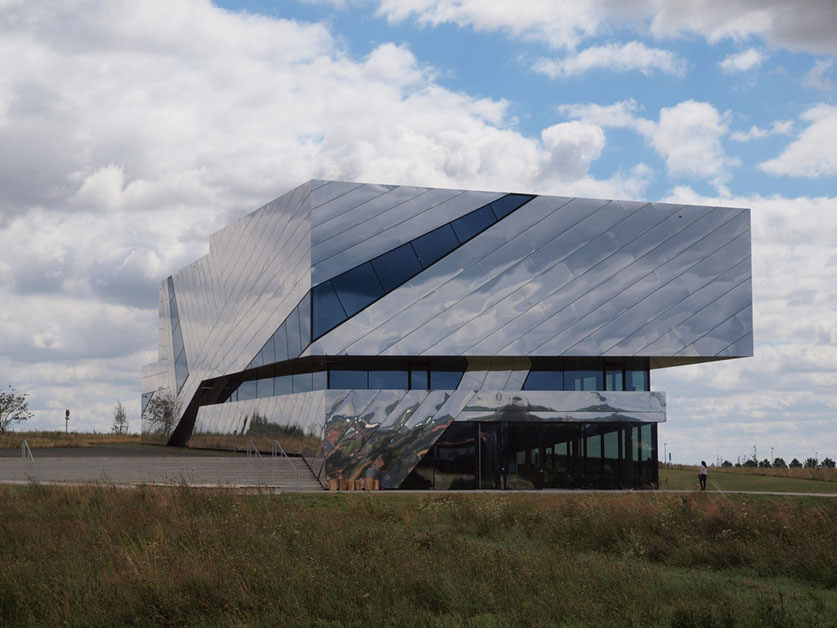
Paläon Schöningen by Helena is licensed under CC BY 2.0
The scene is an open-cut coal mine in Schöningen, Germany, the time is 1994. A discovery is made that totally changes the way scientists view our ancestors.
Three spears were found. Radiocarbon dating confirmed them to be approximately 300,000 years old, making them the oldest hunting tools in the world. Before this discovery, it was believed that humans at this time were scavenger gatherers. This discovery has lead scientists to rewrite history with our ancestors as hunters instead.
The Paläon Research and Experience Center situated at the site of that mine and is home to the spears. The museum endeavors to blend into the landscape through its mirror facade. The architects, Holzer Kobler Architekturen, chose this in order to merge modern with natural. The unusual shape of the windows references the nearby open-cut mine and spears themselves. Through them, visitors are able to see the mine, forest, and steppes where wild horses still roam.
Inside the Paläon, the exhibition space is divided up by angular formations which also serve to display the materials. Beyond decoration, their shape is inspired by horse bones. Some of the key research being done in correlation with the spears is among the thousands of pieces of animal bones found in the area. Scientists are seeking evidence of early composite tools.
Excavations are ongoing today. Visitors can see scientists at work in the laboratory and even try their hand at solving ancient mysteries. Additionally, visitors can also know they supported research to try and uncover the mysteries of the past at this fascinating site.

